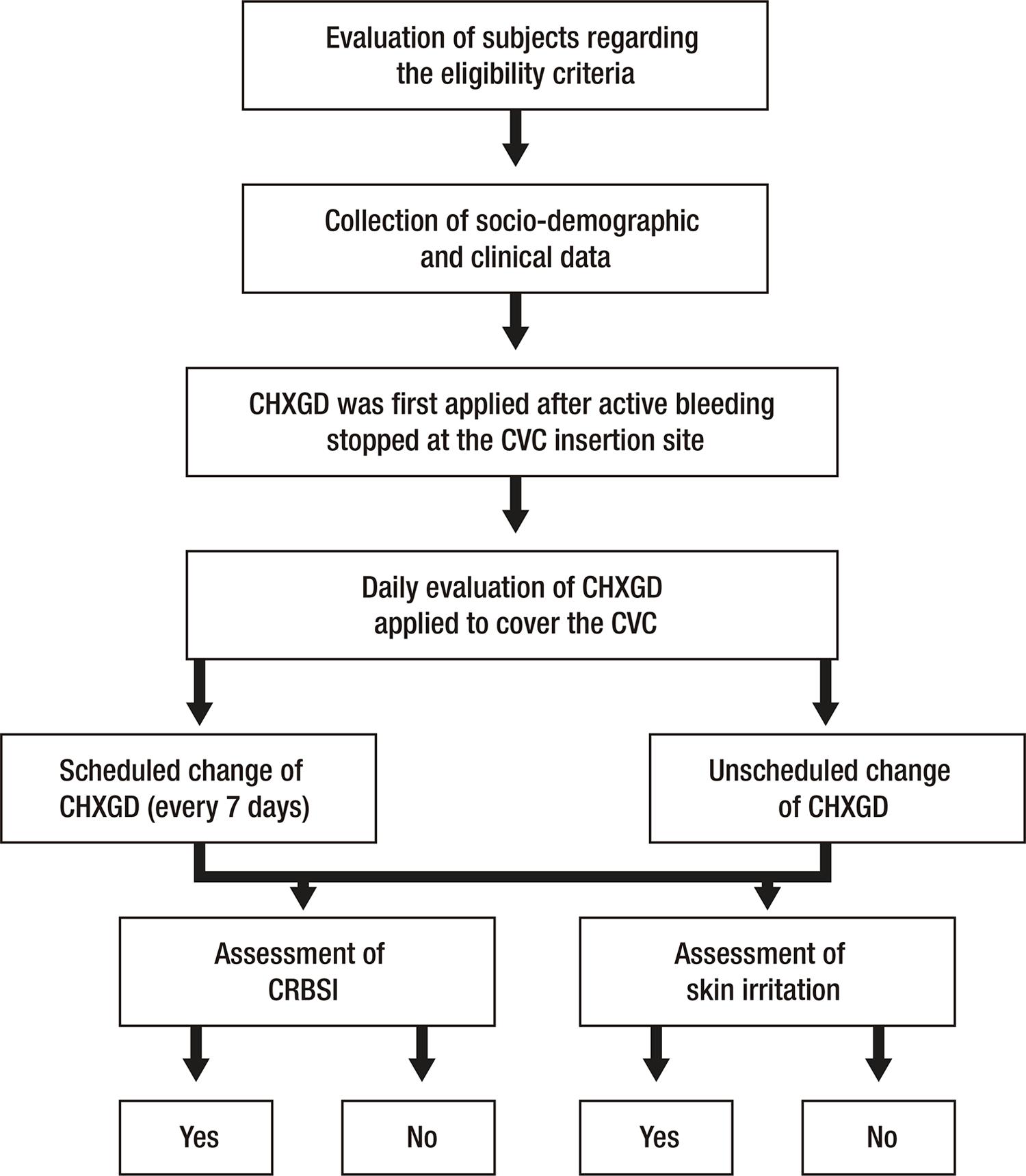Abstract
Objective
Monitor the use of chlorhexidine gel dressing in the central venous catheter of children and adults submitted to hematopoietic stem cell transplantation (HSCT) to check for catheter-related bloodstream infection and skin irritation while using this dressing.
Methods
This is a prospective observational study with 25 patients with central venous catheters (CVC) inserted for hematopoietic stem cell transplantation. Dressing characteristics, skin characteristics, clinical conditions of patients and infection-related characteristics were evaluated daily. Patients were monitored from the first day of CVC insertion until removal, up to 45 days from the CVC insertion date.
Results
Catheter-related bloodstream infection (CRBSI) occurred in 28% of all patients, with an association between febrile neutropenia and infection (p<0.01). Skin irritation was identified in 24% of patients. No association was found between catheter-related bloodstream infection and skin irritation (p=0.51). A significant association was observed between skin irritation and dressing removal (p=0.03). Unscheduled dressing changes corresponded to 50% of all dressing changes identified during the study, and the main reason was presence of blood in the dressing (57.8%).
Conclusion
Using chlorhexidine gel dressing in patients submitted to HSCT proved to be an effective measure to reduce the occurrence of catheter-related infections, when compared to literature data. The cases of CRBSI found in this study were mainly associated with the condition of neutropenia, which is very common in this population. The cases of dressing-related skin irritation and presence of blood as the main reason for unscheduled change highlight the importance of nurses having proper knowledge about how to use this dressing in order to create protocols for safe dressing use and handling.
Hematopoietic stem cell transplantation; Catheter-related infections; Central venous catheters; Chlorhexidine; Bandages, hydrocolloid

